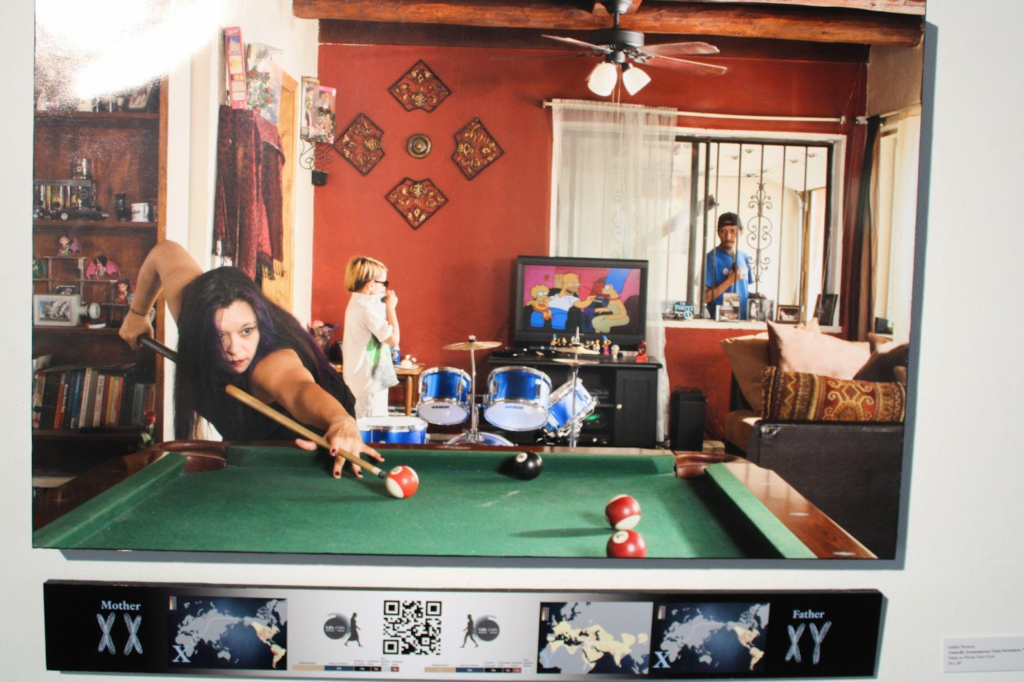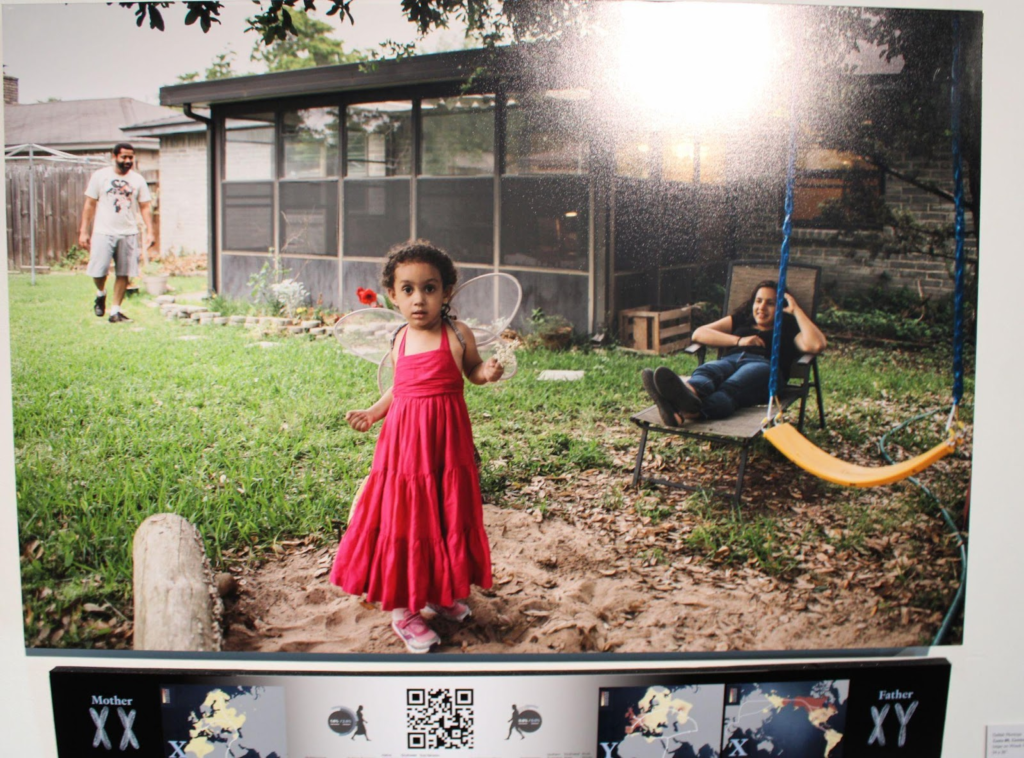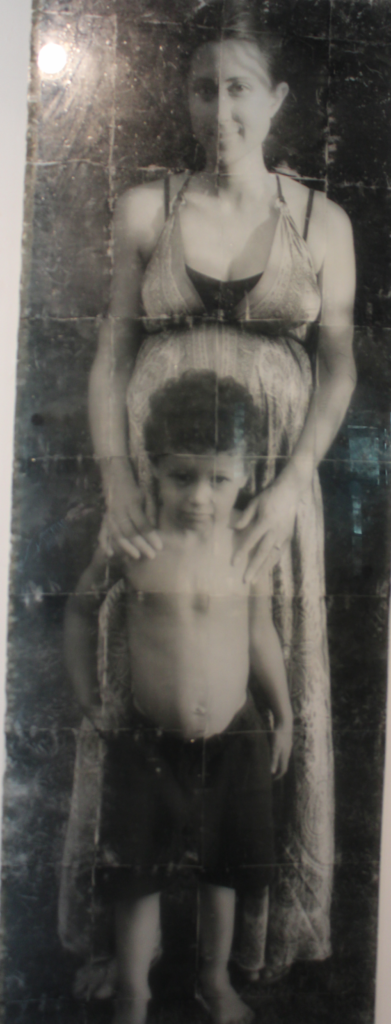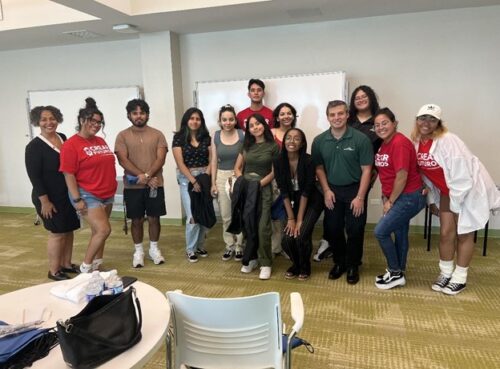The Amelie A. Wallace Gallery’s current exhibition, titled “Inheritance, Remembrance and Resilience,” is a collection of photographic works by artists Eileen Claveloux, Sandra Matthews, and Delilah Montoya. The artists tap into their individual cultural experiences, using family portraits to display generations of history. This unique exhibition opened on October 25th and will last until December 5th.
The Art Gallery director Hyewon Yi who also teaches Visual Arts courses at SUNY Old Westbury emphasized the importance of connecting our inheritance to art in the form of photographs. “For what they are trying to say, the artists picked the best medium to capture their inheritance, their family, traditions, cultural backgrounds and everything.” The information about these works is sourced from the art gallery’s pamphlet.
Delilah Montoya’s Contemporary Casta Portraiture: Nuestra Calidad amplifies the Chicano experience using modern tools of digital imaging and DNA testing. It’s worth noting that only Montoya’s photos are with color, compared to the others in the exhibition that are black and white.
Her photos are an allusion to 1700s Spanish colonial casta paintings, where family hierarchy correlated with race (those with lighter skin had more ‘power’). Delilah found families with a variety of ethno-racial ancestries in New Mexico and Texas, asking them to sit for a portrait and take a DNA test. Their DNA results are below the portraits with vials of colored sands that represent the portion of their ancestry from regions around the world, with a global map charting 100,000 years of human migration. Seeing this info attached to the photos is fascinating and feels purposeful. Delilah wanted us to assess our unconscious judgements when evaluating others by color and economic status, while also reminding us that we are all members of the same human species.

In one photo a woman focuses on playing pool in her living room. What we can assume is her son with blonde locks accompanies her, standing next to a set of blue drums and watching The Simpsons. The father is outside, seen through the living room window. Both parents are 32% Mediterranean and 30% Native American. Montoya showcases families just doing regular family activities like cooking and even going to the store.

The portraits display depth as well. One photo, of a toddler’s hair being done at the dinner table, shows family members in the background in a bedroom and the kitchen. Another of Montoya’s portraits shows an afro-centric little girl in a pink dress with butterfly wings as her mother sits behind her in a chair smiling in their backyard. It feels like a relived childhood moment, where we were our most spontaneous and carefree.
Eileen Claveloux’s Diasporan Portraits features descendants of survivors of the Armenian Genocide with their photographs mounted on acrylic panels with a shadow effect. Claveloux’s work is more solemn and feelings of sorrow creep up after a while of looking at the photos. This hidden genocide occurred in plain sight but has been denied in history by its perpetrators.

This project feels deeply personal for Claveloux herself as it is believed more than 70 members of her extended family died in the genocide; her grandmother is a survivor. The shadow on the figures represents how the history still affects their lives. However, Claveloux’s work is meant to also provide a message of hope and survival.
One of the portraits that stood out was a pregnant woman, Sofia, holding her young son, Gael, in 2014. It is one of the taller portraits in this collection. The photo next to this one is from 2020, with Gael grown up and standing tall next to another family member. More than anything, Diasporan Portraits is about strength, survival and resilience.
Lastly Sandra Matthews’ Present Moments is the most impressive collection composition-wise. She combines two portraits years apart into a single composite paragraph which portrays the effects of time and experience on face and bodies. For most of the subjects, Matthews utilizes a collaged newspaper backdrop to illustrate the range of events that occurred throughout their lives on a local, national, and global level.
The photos captured of her subject Chris captured my attention the most. The left side is taken in 1972, where he’s sitting handsomely in the woods, and on the right is Chris standing in those same woods in 2015, aging maybe somewhere in his 50s. Matthews merged the photos in an incredible way where it looks like one composite photograph — in the same time location.
Presents Moments makes the viewer aware of aging, and how different, yet similar, one could look from the present and future. Matthew’s collection was also inclusive, capturing biracial families and pregnant women. In a way, Present Moments makes me appreciate the concept of time and cherish every moment. Inheritance, Remembrance and Resilience is a truly fascinating exhibition. It stresses the importance of family, culture, inheritance, and strength through the lens of time. With a multicultural student body, this exhibition feels very relevant to SUNY Old Westbury.







